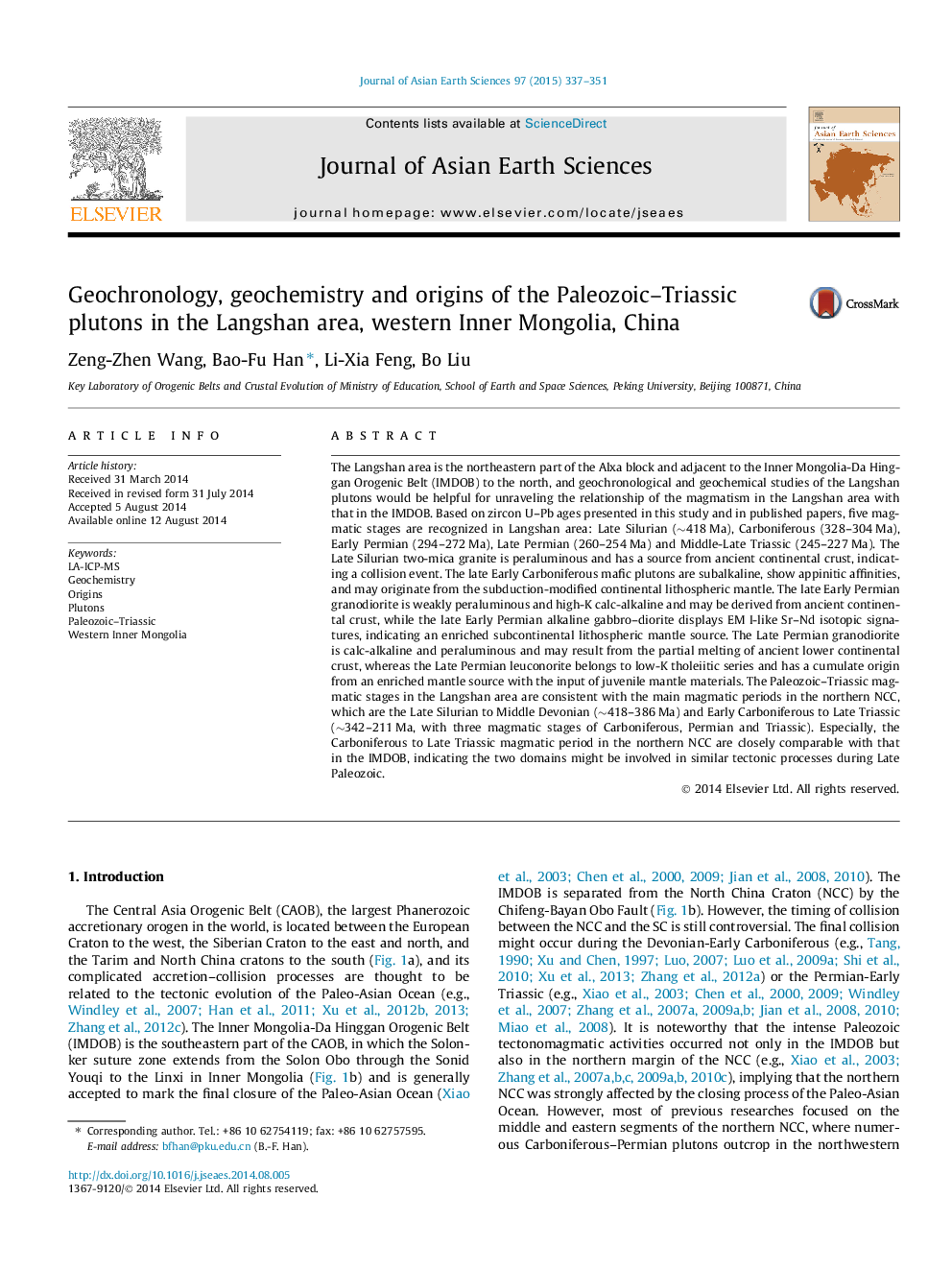| Article ID | Journal | Published Year | Pages | File Type |
|---|---|---|---|---|
| 4730442 | Journal of Asian Earth Sciences | 2015 | 15 Pages |
•Five Paleozoic–Triassic magmatic stages in Langshan area, western Inner Mongolia.•Crustal or enriched lithospheric mantle sources for the Langshan plutons.•Similar tectonic processes in the northern NCC and the IMDOB during Late Paleozoic.
The Langshan area is the northeastern part of the Alxa block and adjacent to the Inner Mongolia-Da Hinggan Orogenic Belt (IMDOB) to the north, and geochronological and geochemical studies of the Langshan plutons would be helpful for unraveling the relationship of the magmatism in the Langshan area with that in the IMDOB. Based on zircon U–Pb ages presented in this study and in published papers, five magmatic stages are recognized in Langshan area: Late Silurian (∼418 Ma), Carboniferous (328–304 Ma), Early Permian (294–272 Ma), Late Permian (260–254 Ma) and Middle-Late Triassic (245–227 Ma). The Late Silurian two-mica granite is peraluminous and has a source from ancient continental crust, indicating a collision event. The late Early Carboniferous mafic plutons are subalkaline, show appinitic affinities, and may originate from the subduction-modified continental lithospheric mantle. The late Early Permian granodiorite is weakly peraluminous and high-K calc-alkaline and may be derived from ancient continental crust, while the late Early Permian alkaline gabbro–diorite displays EM I-like Sr–Nd isotopic signatures, indicating an enriched subcontinental lithospheric mantle source. The Late Permian granodiorite is calc-alkaline and peraluminous and may result from the partial melting of ancient lower continental crust, whereas the Late Permian leuconorite belongs to low-K tholeiitic series and has a cumulate origin from an enriched mantle source with the input of juvenile mantle materials. The Paleozoic–Triassic magmatic stages in the Langshan area are consistent with the main magmatic periods in the northern NCC, which are the Late Silurian to Middle Devonian (∼418–386 Ma) and Early Carboniferous to Late Triassic (∼342–211 Ma, with three magmatic stages of Carboniferous, Permian and Triassic). Especially, the Carboniferous to Late Triassic magmatic period in the northern NCC are closely comparable with that in the IMDOB, indicating the two domains might be involved in similar tectonic processes during Late Paleozoic.
